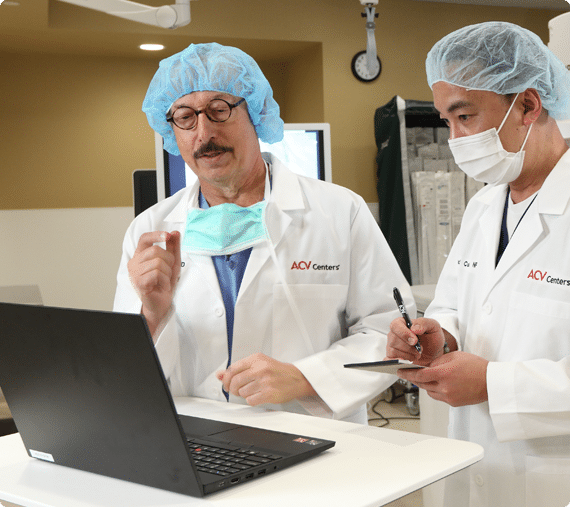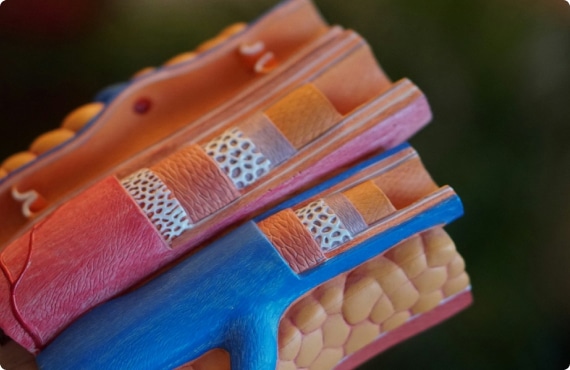Please Follow us on:
Treatments
Peripheral Artery Disease

peripheral artery disease
PAD Treatment
ACV specializes in lower extremity peripheral vascular interventions, which are also called endovascular interventions. Simply put, our providers use advanced tools and techniques to remove blockages from arteries primarily in the legs, returning blood flow and improving circulation.
Peripheral vascular interventions can be done in a high-tech procedural room right in our office space as well as at the hospital. When you arrive, you will be greeted by a member of our team who will explain the procedure, confirm your history and home medications, ask you to sign any necessary paperwork, obtain vital signs and establish an IV. Your physician will review your procedure with you and answer any questions prior to going forward with any procedure.
An anesthesia provider will then make you feel relaxed and comfortable prior to the procedure. We start an endovascular intervention by placing a small tube, like an IV, in an artery in the groin, leg and/or foot. This allows us access to the blocked area(s).
We then use tools such as wires, catheters (tubes) and balloons to help make pathways through the blocked arteries. These pathways allow us to treat the blockages. We may also choose to use a device to help break up the blockage called atherectomy. Additionally, special balloons, treated with medicine called drug-coated balloons (DCBs) and stents may also be needed.

our tools
Each device we choose is based on the type, composition and location of the blockage that you have.
Plan on at least 3 hours for this procedure. While we could take less – or occasionally more time – three hours is typically standard.
After the procedure, you will be reunited with your family in a recovery room, where you will stay from 2 to 6 hours. Unless our physicians recommend otherwise, you will be able to return home the same day.
Our tools include:
Atherectomy devices
There are several different atherectomy devices available. Atherectomy devices are designed to clean out or break up blockages. Because blockages can be made of many different elements, each device is suited for a particular type of blockage. These devices are commonly referred to a “Roto-Rooter” devices.
Drug-coated balloons
These advanced balloons are coated with medication to help prevent the plaque from developing again and causing a stenosis, or blockage. When the balloons are inflated, they expand and deposit the medication on the walls of the artery.
Drug-eluting stents
These stents are also coated with medication to help prevent plaque from developing again and causing a stenosis. Stents are inserted into the artery to help create a channel for blood to flow.